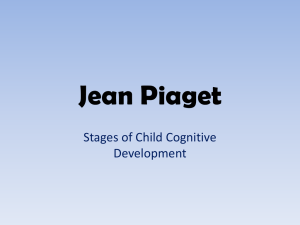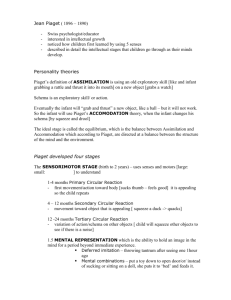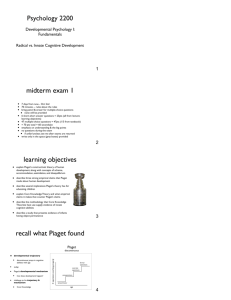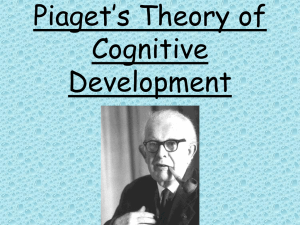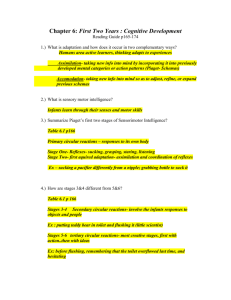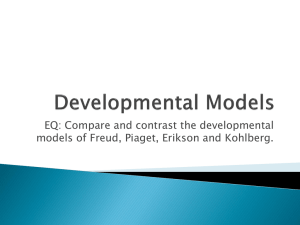Piaget cog development
advertisement
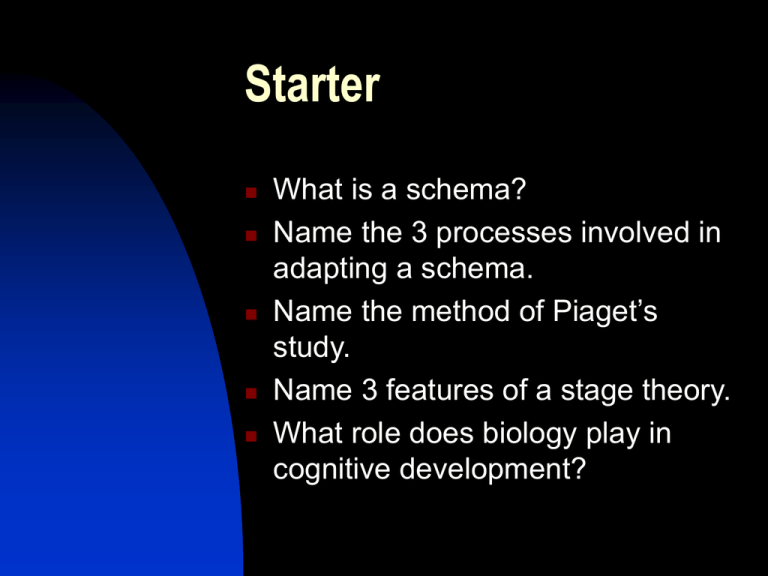
Starter What is a schema? Name the 3 processes involved in adapting a schema. Name the method of Piaget’s study. Name 3 features of a stage theory. What role does biology play in cognitive development? Piaget’s stage theory of Cognitive Development Sensorimotor stage Preoperational stage Concrete operations stage Formal operations stage The Sensorimotor StageBirth- 2 years First 3 sub stages Birth to 8 months Child deals with the world through sensations. Little evidence of what we would call thinking. Child’s experience is limited to the here and now. The child only responds to objects that are present at the time, shows little awareness of past or future, or objects which are not present anymore. Child has no self-concept Child has no idea that objects can exist independently of them. Second 3 sub stages 8 to 24 months Child’s actions become more intentional (e.g.) moving a chair away to get to another object. Trial and error behaviour becomes more apparent. If the child has a toy that squeaks when it is squeezed they may squeeze other objects to see if it is the same. The child begins to show signs of simple pretend play. Language development also occurs at this stage. The child also develops self-concept and object-concept. Object-concept can be defined as the awareness that objects exist independently of us in the world, and continue to exist even if we are not observing them. Piaget devised a simple test to investigate this called the test of object permanence Piaget’s test of object permanence Object permanence means knowing that an object exists, even if it is hidden. It requires the ability to form a mental representation of the object. Alternatively it can be defined as the ability to react to the disappearance of a previously present object, for example by searching for it. Watch the demo Aim: (Piaget 1963) wanted to find out at what age children acquire object permanence. Method: Piaget hid a toy under a blanket, while the child was watching, and observed whether or not the child searched for the hidden toy. Searching for the toy was evidence of object permanence. Piaget assumed the child would only search if they had a mental representation of the toy. Results: Piaget found that infants searched for the hidden toy when they were around 8 months old. However if the toy was removed from under the blanket and then hidden in another place, the infant continued to search for the toy in it’s first hiding place - under the blanket. Piaget found that around 12 months this changed and they searched in the most recent hiding place. Conclusion: Object permanence develops around 8 months Plenary What problems arise from Piaget’s test of object permanence? What criticisms can be made?
